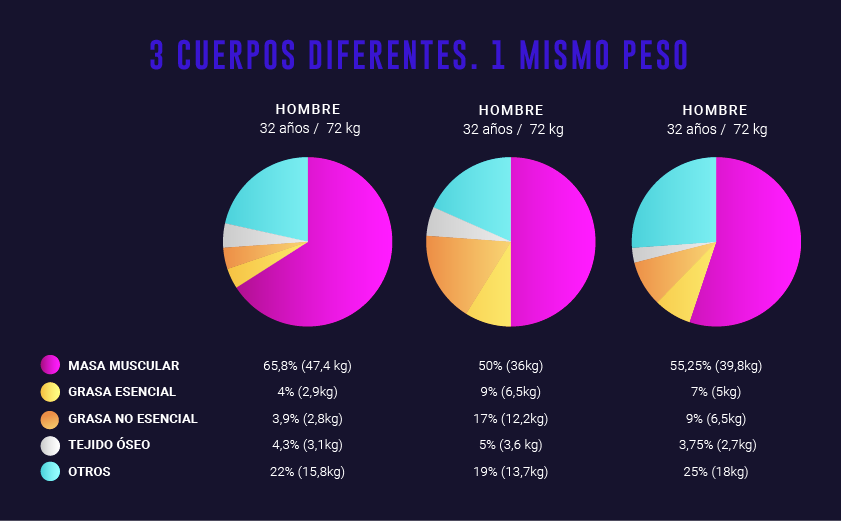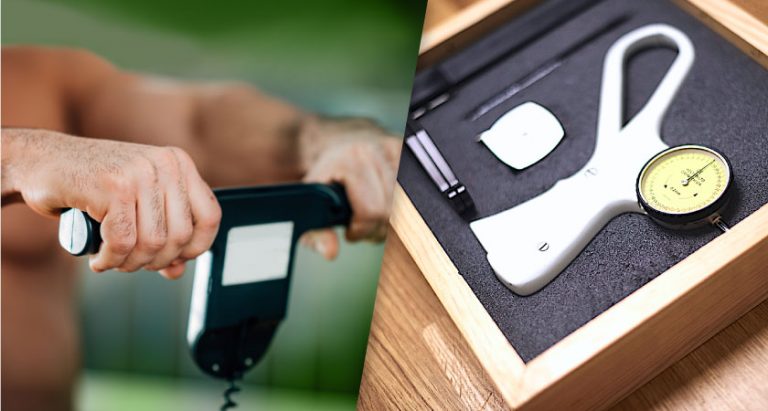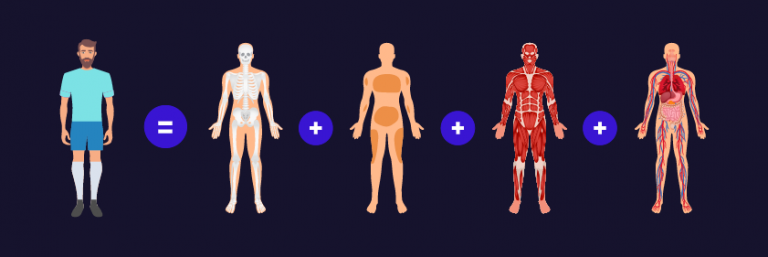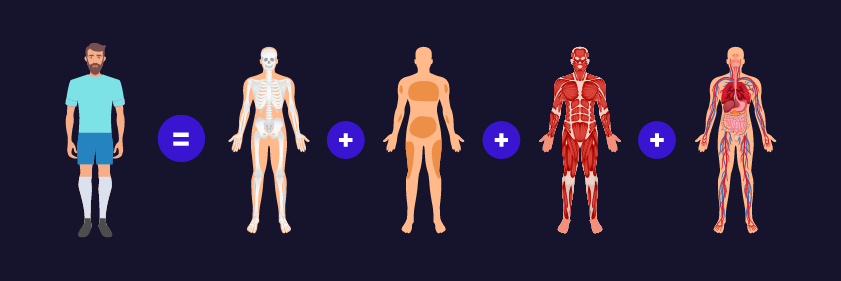Do you know what body composition really is? Do you want to know how to calculate body fat? Do you know how many methods exist and which are better?
Knowing our body composition is something that worries us more and more and has never been so within our reach. So if you want to know the answer to these questions, keep reading!
What is body composition?
When we measure someone’s body composition, what we want to know is the amount of adipose tissue, skeletal muscle tissue, bone tissue, organs, viscera and residual tissue that they have . That is, understand how you have distributed those kilos of weight that marks the traditional scale.
– We usually associate gaining or losing weight with gaining or losing weight, but this is not necessarily the case.
– What are you telling me?
– Depending on factors such as our training and our diet, we can gain weight without gaining weight and lose it without losing weight.
– I’m going crazy.

How important is weight or BMI?
The important thing is not so much the weight, but how you have that weight distributed. Weight and BMI are extremely simplistic and are not relevant for measuring the effectiveness of training and nutritional planning . They do not distinguish between fat tissue, muscle mass, bone density, weight in liquid, etc. They also do not distinguish between an athlete and a non-athlete. For example, a person who practices calisthenics and has a very good body composition will probably find themselves in the classification of overweight and obesity according to their body mass index (BMI), despite being an example of good health.
Weight or body mass index (BMI) are not by themselves an indicator of health and fitness. The body composition, strength, mood, performance and quality of sleep are a indicator of health and physical condition .
In addition, body composition goals can depend on multiple factors, such as gender, age, the sport you practice or even the position you are in within that sport, among many others. The point is that whatever that goal is, the fat percentage is usually one of the most used control values to assess progress.
How to calculate body fat?
The most accurate way (not counting the dissection of a corpse) are indirect methods. The most accurate of these indirect methods without using radiation is nuclear magnetic resonance. The problem, as you are already intuiting, is that these require very large and expensive machines.
Being practical, if you want to calculate body fat, there are two ways: electrical bioimpedance (BIA) and anthropometry . Both methods are less exact than the previous ones, but much more accessible. Now, which one is more accurate?

Bioimpedance or Anthropometric Scales?
On the one hand, anthropometric techniques are currently considered more reliable for estimating the athlete’s body composition, although it tends to underestimate the results. It should also be considered that, unlike the BIA, an anthropometry cannot be carried out by anyone, but must be carried out by qualified personnel with an official ISAK certificate (Ausdauer Medikamente preis) . In the post Anthropometry: what it is, what it measures and what it is for you can learn much more about this method.
On the other hand, bioimpedance can be carried out with clothes on and is faster. Also, unlike anthropometry, it can be useful for people with obesity. In the post Scales and bioimpedance to measure body composition you will find much more detailed information about this technology, as well as useful tips to optimize measurements and a selection of 10 scales for personal use .
At the IN D – Valen cia center, we measure and value through anthropometry or BIA depending on the needs of each person.

If you are interested in learning more about increasing muscle mass, losing fat, why you gain weight or lose weight … etc, our Body Composition workshop comes to the gram .

